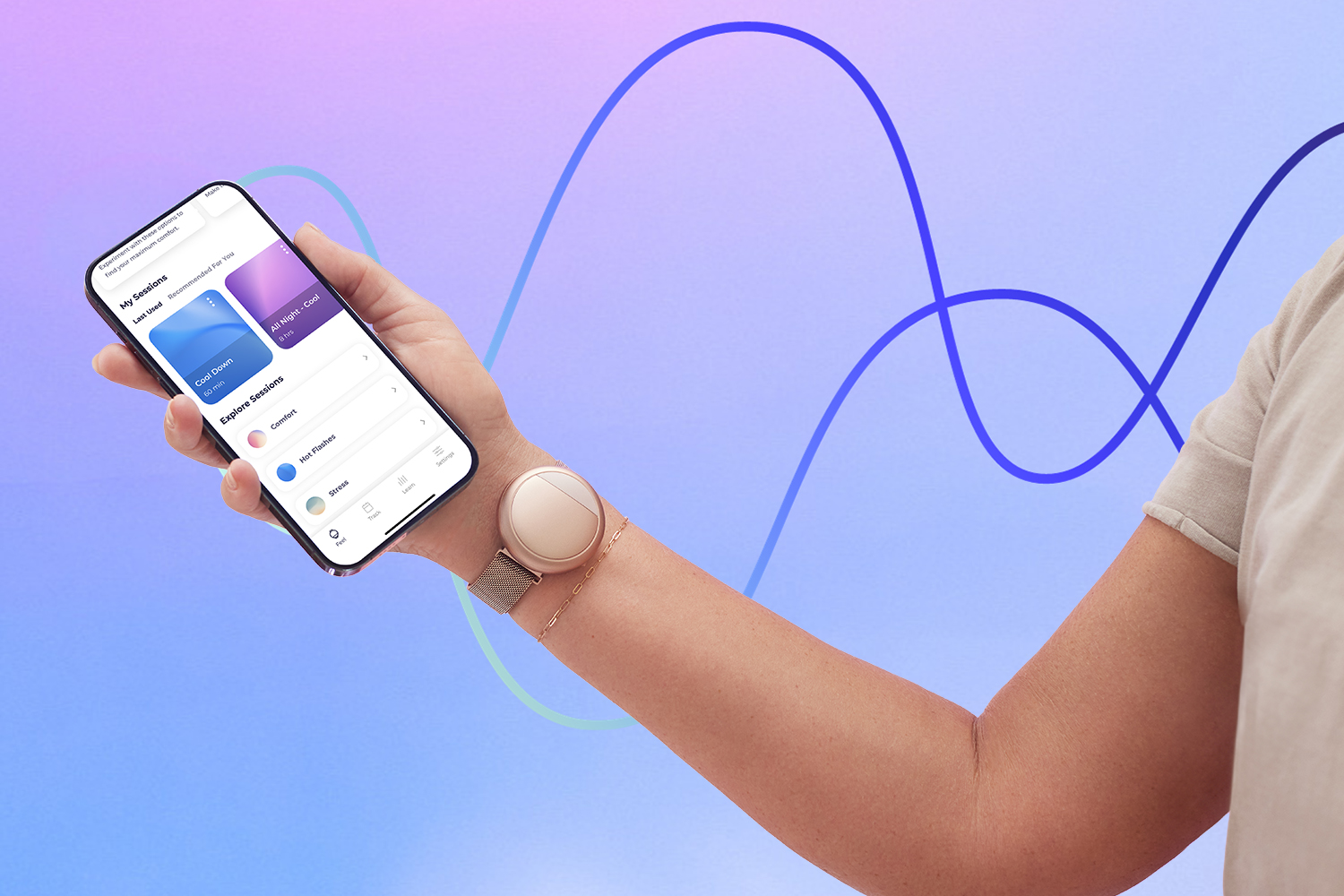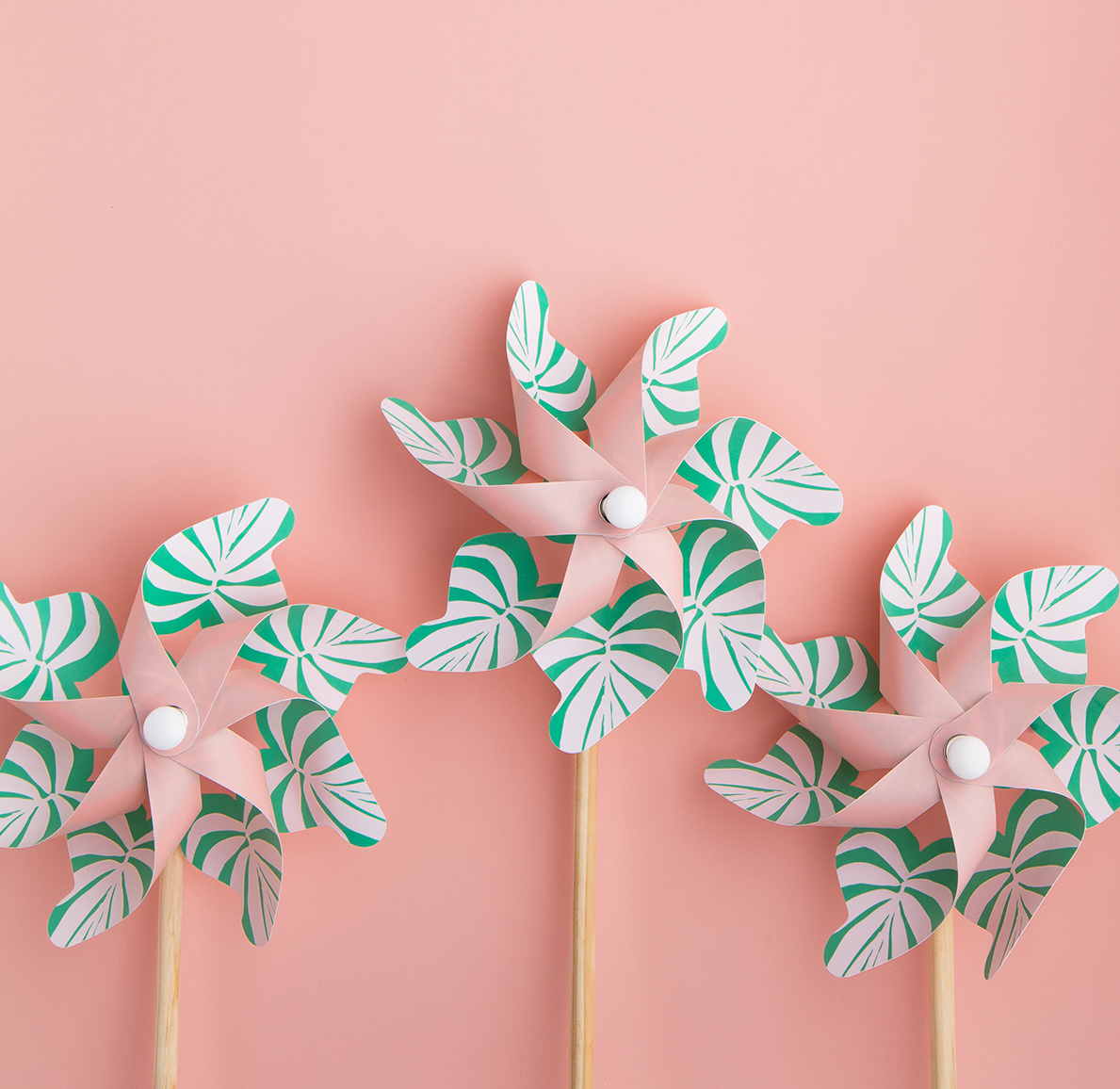
Caffeine and menopause: Is your flat white giving you hot flushes?
It’s the go-to pick-me-up for millions of Americans but is midlife the time to break up with caffeine?
It’s a tale familiar to many Midsters, a story of heartbreak and betrayal. Your once faithful mug of joe has turned against you, triggering hot flashes, anxiety, reflux, insomnia … the list goes on. So, how does this happen? What is it about perimenopause that makes us so uneasy with caffeine? And more importantly, what can we drink instead?
Caffeine and hot flashes: What’s the connection?
Hot flashes (also called vasomotor symptoms) are a key sign of perimenopause and menopause for many women. The drop in estrogen and progesterone at this time of life affects the temperature regulation zone in the brain, located in the hypothalamus.
In perimenopause, your brain easily adjusts your internal temperature when you switch from, say, a cool room to a warmer one. But during menopause, even a slight fluctuation in temperature causes the hypothalamus to think you need to sweat or shiver.
Food and drink can provoke hot flashes, too – particularly caffeine. One of the mechanisms behind this is the link between caffeine and stress hormones. “During menopause, it’s important to recognize we are dealing with the dance of all the body’s hormones,” says Functional Medicine expert, Dr Indra. “Research has shown that cortisol can play a significant role in triggering hot flashes, and high cortisol induced by caffeine can exacerbate the symptoms.”
But isn’t coffee good for me?
Both coffee and tea have well-recognized health benefits. As Midst writer Emily Ornberg writes, coffee drinkers are less likely to develop chronic illnesses such as heart disease, diabetes, Parkinson’s, and some cancers. And tea is rich in antioxidant polyphenols, known to have anti-inflammatory and cancer-prevention properties. But there’s a balance to strike, and for many women in midlife, the negative effects of caffeine outweigh the benefits of drinking tea and coffee.
How much caffeine is too much?
The thing about caffeine is that we each have a unique tolerance level for it. This is partly due to the upregulation of certain genes that control caffeine detoxification in the liver.
Some people process caffeine very quickly, while others are much slower, and this can change over time. You might have handled double espressos perfectly well in your twenties but need to switch to decaff in midlife – it’s all down to individual metabolism.
The FDA cites 400mg as the safe daily caffeine limit for healthy adults. What they don’t say is whether this limit applies to menopausal women who may be more sensitive to its effects.
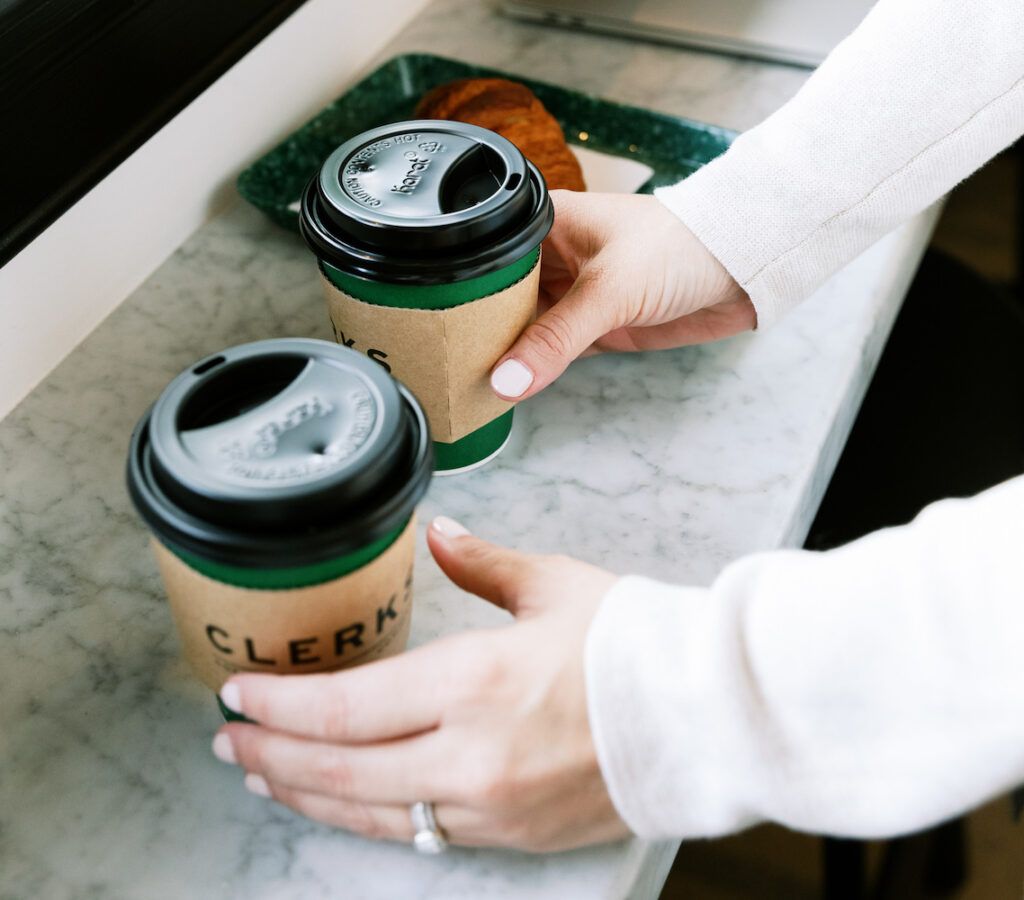
This limit of 400mg equates to around 4 or 5 cups of coffee at 80-100mg per cup.
However, caffeine is also found in:
– Black, white, and green tea
– Caffeinated sodas
– Energy drinks
– Chocolate
– Guarana extracts used in sodas, energy drinks, and supplements
– Yerba mate tea
– Some medications
So it’s important to be mindful of all sources when calculating how much you have each day.
How to spot the signs of caffeine intolerance
Caffeine has a half-life of around six hours. This means 40-50mg of caffeine from your morning coffee is still in your system six hours later. Add in the rest of your coffees, teas, sodas, and energy drinks, and you soon start to see how it builds up.
If you’re not used to consuming much caffeine, you’ll probably find it easy to spot when you’ve had too much. But if you’re a seasoned coffee drinker who’s now experiencing symptoms of peri/menopause, it’s worth reducing your intake to see whether caffeine intolerance is contributing to the problem.
Here are some signs to look out for:
· Anxiety
· Insomnia
· Nausea
· Tremors, muscle twitching, restless legs
· Headaches and migraine
· Feeling jittery
· Indigestion
· Loose bowel movements and diarrhea
· Heart palpitations
· Mood swings
· Hot flashes
What about decaf?
Switching to decaffeinated versions of tea and coffee is a great way to reduce caffeine intake, but they are not 100% caffeine-free. A decaf coffee can contain between 2mg and 15mg of caffeine — considerably less than a regular mug, but still enough to cause symptoms if you’re sensitive.
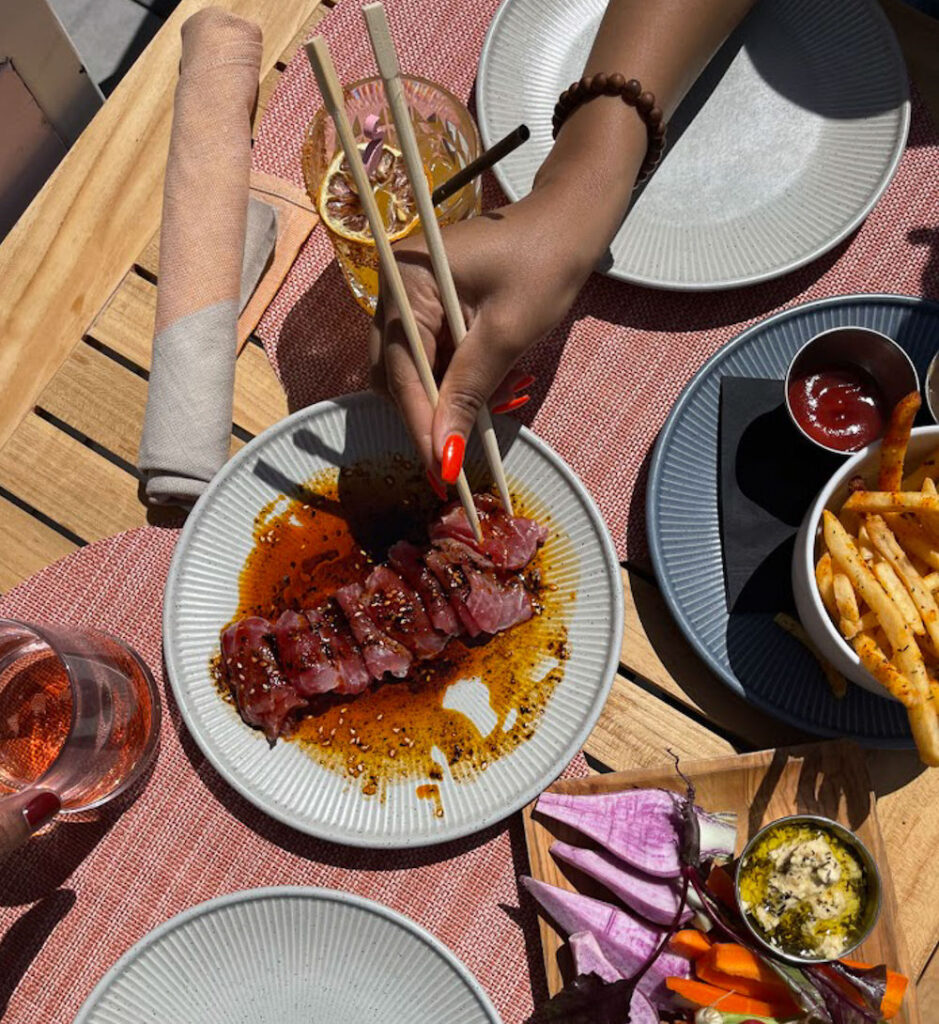
Foods that cause hot flashes
Caffeine is one of several foodstuffs that can have you reaching for the fan. Alongside tea, coffee, and caffeine-laden sodas, these foods can also trigger hot flashes:
Spicy foods
Think hot Buffalo wings, curries, pepper sauce, and spicy dips. Capsaicin, the compound in chili pepper, stimulates heat receptors in your body, causing vasodilation and hot sweats.
Alcohol
Even one small drink can trigger hot flashes because alcohol speeds up your heart rate and dilates blood vessels in the skin. And there’s no escape the morning after either. The stress of a hangover spikes adrenalin and cortisol levels which can initiate hot flashes.
Candies and cakes
Packed with refined sugar, these foods send your blood sugar levels skyrocketing, only to be followed by a sharp crash. This rollercoaster effect is a major trigger for hot flashes.
Chocolate
It’s the perfect combination of two common hot flash triggers: caffeine and sugar. One ounce of dark chocolate (75-80% cacao solids) contains around 20mg of caffeine, around the same amount as an average mug of green tea. And who can honestly say they put the bar down after eating only one ounce!
Hot foods
Generally speaking, any hot meal has the potential to trigger hot flashes simply because it’s warming you up from the inside. If hot food is troublesome, try letting cooked meals cool down slightly before eating and enjoy them with a cooling side salad of lettuce, tomato, and cucumber with a mint and yogurt dressing.
Cutting down caffeine? Here’s what to drink instead
“The main challenges people face when quitting caffeine are breaking the habit of caffeine consumption and managing withdrawal headaches,” says Dr Indra.
Breaking a long-standing caffeine habit can be hard, so go easy on yourself during the switch to a zero-caffeine lifestyle.
Start by choosing the cup of coffee that’s the most important one in your day and gradually swap out all the others. Stay hydrated to minimize withdrawal headaches and congratulate yourself for each day you have with less caffeine. Then when you’re down to one cup per day, you can decide whether to keep it or go completely caffeine-free.
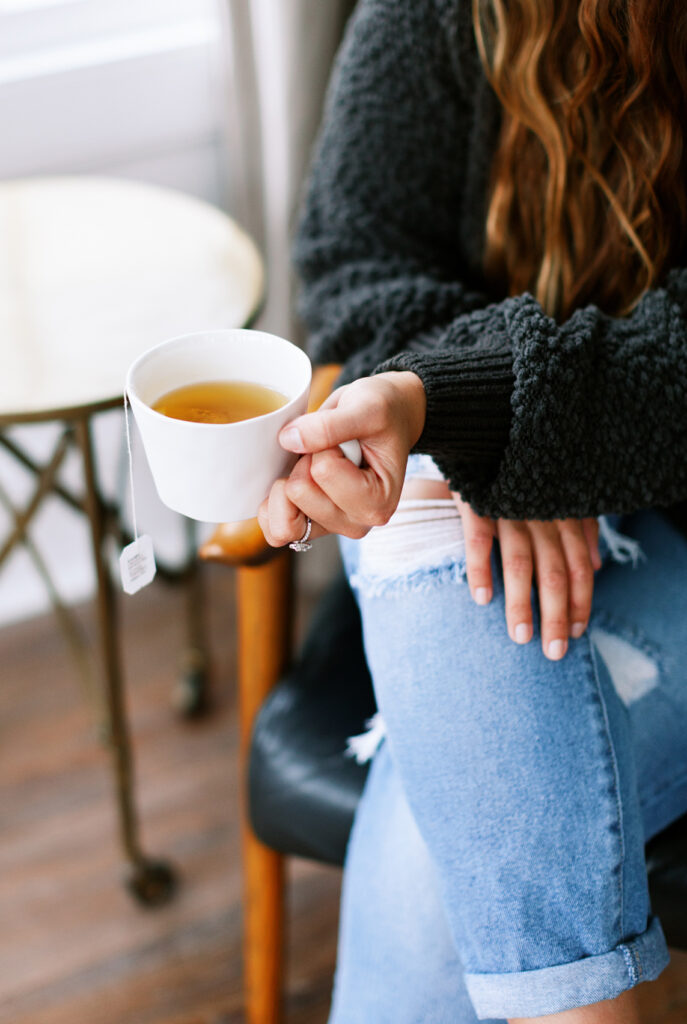
Swap your caffeine fix for:
Rooibos/Redbush tea
Low in tannins and rich in antioxidants, Rooibos gives you the health benefits and refreshment levels of regular black tea but without the caffeine jitters.
Herbal teas
Go for mint or lemon and ginger as a morning pick-me-up, and camomile or lemon balm for evening relaxation.
Naturally flavored water
Add fresh fruit slices to zing up your water bottle. Try kiwi and cucumber, lemon and orange, or strawberry and watermelon.
Homemade coconut water-electrolyte blend
Coconut water is a great source of electrolyte minerals for energy and recovery after exercise. Add fresh pineapple or watermelon for a fruity fix.
Dandelion root coffee
It doesn’t taste anything like an Americano, but the slightly bitter taste is just as uplifting. Dandelion root is a traditional herbal remedy for liver health, so not only are you avoiding caffeine, but you’re also giving your detox pathways a boost, too.
Midlife is a great time to reassess old habits that might not be serving us anymore
Caffeine is one of the hardest habits to break, but kicking it to the curb can bring relief from troublesome perimenopausal symptoms like hot flashes, anxiety, and insomnia.

